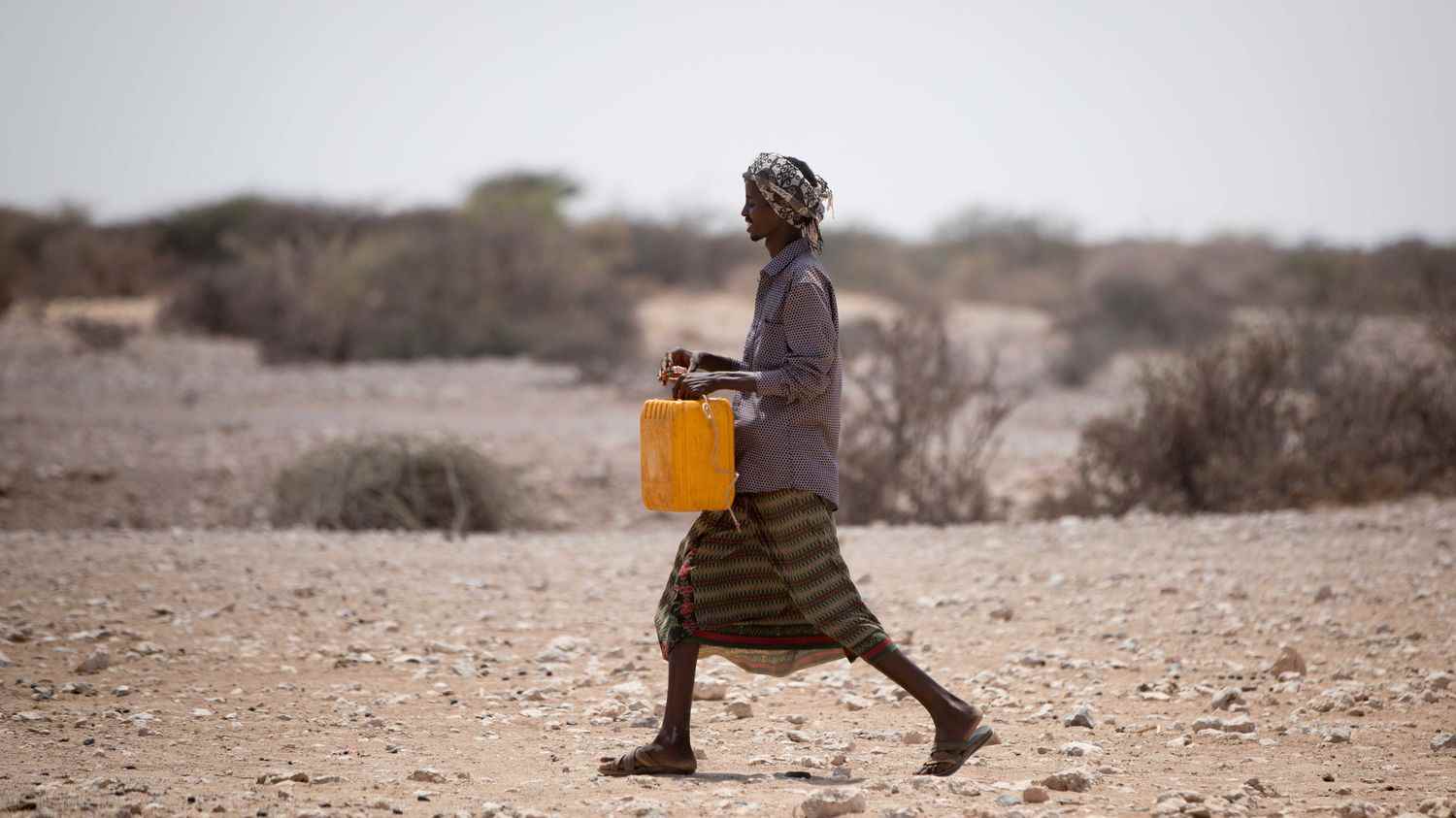The lack of water is a subject that has been of concern in France for several weeks, and regularly for several decades. However, France is not the only country to experience periods of severe drought. Worse, countries are on alert around the world. Direction Iran, Ethiopia and Chile which are experiencing crises rarely equaled.
In Ethiopia, the worst drought for 40 years
In the Horn of Africa, the drought currently affecting the region is the worst in forty years, assure the United Nations. In some areas, it has not rained for 18 months and in some districts, three rainy seasons have passed entirely without a single drop of water. The fourth season, supposed to start right now, could also be dry.
Concretely, the soils are dry. On these soils lie thousands of carcasses of goats, cows and camels who died of thirst in the desert. More than two million head of cattle have already borne the brunt of the drought in the region. Villages and camps for displaced people are so saturated that they sometimes run out of water.
An estimated 20 million people are at risk of starvation between Ethiopia, Kenya and Somalia.
>> “We had never seen giraffes die because of the drought”: the image that shocked the world
According to the NGO Oxfam, a person dies of hunger every 48 seconds in these three countries. If nothing is done, 350,000 children could die in the coming months. As a reminder, the last major tragedy in the Horn of Africa dates back to 2011, the year in which more than 250,000 people were victims of the drought in Somalia.
By the very admission of humanitarian agencies, the response is not up to par and for several reasons. We can cite the political instability in Somalia or the civil war in Tigray, in northern Ethiopia. As UN Humanitarian Affairs Coordinator Martin Griffiths regrets, international attention has largely shifted away from the humanitarian drama in the Horn of Africa to focus almost solely on Ukraine.
In Iran, a sandstorm caused by desertification
Coming from Iraq, Syria and Saudi Arabia, a sandstorm prompted the Iranian government to decide on Tuesday and Wednesday to close schools and administrations in Tehran and the western provinces of Iran. ‘Iran.
It is the third time in recent weeks that schools, universities and administrations have been closed in the entire western part of Iran, more than half of the country’s 32 provinces. “I’ve never seen such a thing in all my life“, declared to franceinfo a resident in his sixties who lives in the province of Markazi, several hundred kilometers from the Iraqi border.
On social networks, many residents of border towns with Iraq claim that their lives have become hell. “We are dying“, for his part, says in a video a resident of a town on the border as he wears an oxygen mask to be able to breathe. He was standing in a thick yellowish layer of sand.
The government has advised everyone in the western half of the country, especially the elderly and children, not to go out on the streets. The Minister of Foreign Affairs also wrote to his Iraqi and Syrian counterparts. However, the Iranian government and experts claim that the construction of many dams in Turkey over the past fifteen years has caused the desertification of many regions in Syria and Iraq, which explains these sandstorms.
The water is retained upstream on the Euphrates and Tigris rivers and no longer reaches these two countries, which could cause a conflict in the future between the different countries of the region and an exodus of the affected populations. To this must be added an unprecedented drought in Iran itself.
In Chile, eight million people deprived of water in the coming months?
In Chile, eight million people could be affected by water cuts in the capital Santiago if it does not rain enough in the coming months. An emergency plan was unveiled by the authorities a few weeks ago to deal with the different scenarios.
The country has been hit by drought for more than ten years and the rainfall is decreasing year by year. According to Chile’s meteorological department, from May to July, it should rain 115 millimeters of water in Santiago, while in 2006 it was 130 millimeters for the month of July alone.
The water level of the two main rivers in the region is extremely low, and they are failing to regenerate. The governor of Santiago recently presented a rationing plan consisting of four levels, the red alert being the most restrictive with 24-hour water cuts every four, six or ten days.
This plan has been criticized by several associations and activists because they consider it unfair to penalize citizens when in reality it is agro-industry and large mining companies that consume the most water in Chile. These sectors have water rights. It is indeed possible to obtain some or to buy some, the current constitution written under the dictatorship allows it. Water is therefore a resource that can be privatized. Over the years, the state has granted too many water rights.
Result: entire rivers are now dried up and in places the water tables are drastically decreasing. In some rural areas of northern and central Chile, villages have been supplied by tank trucks for several years now.
